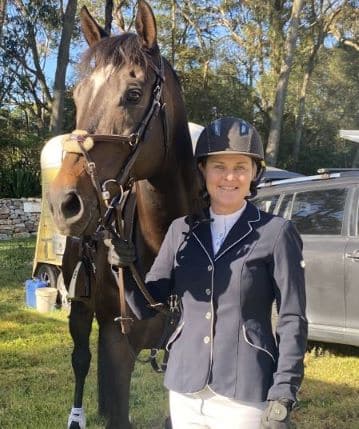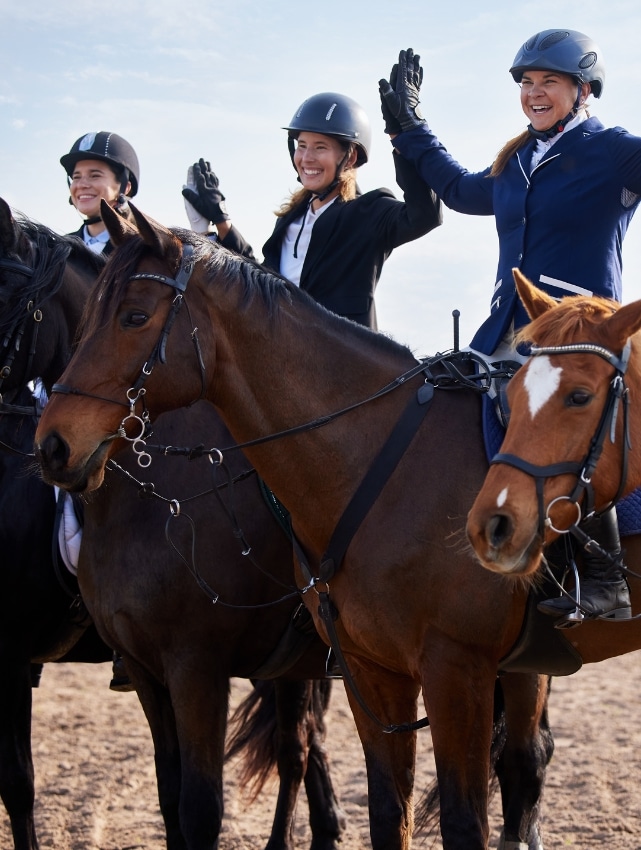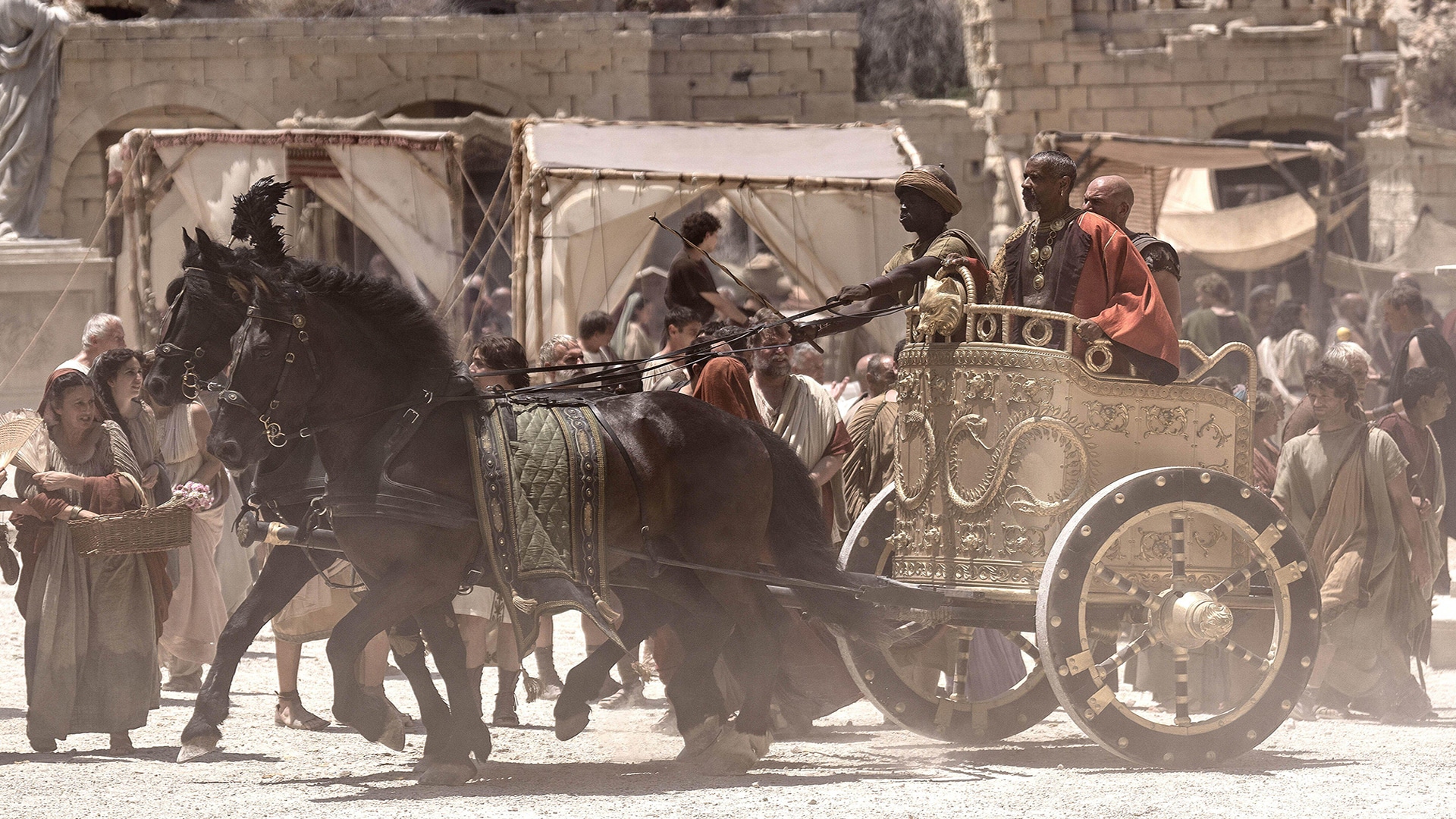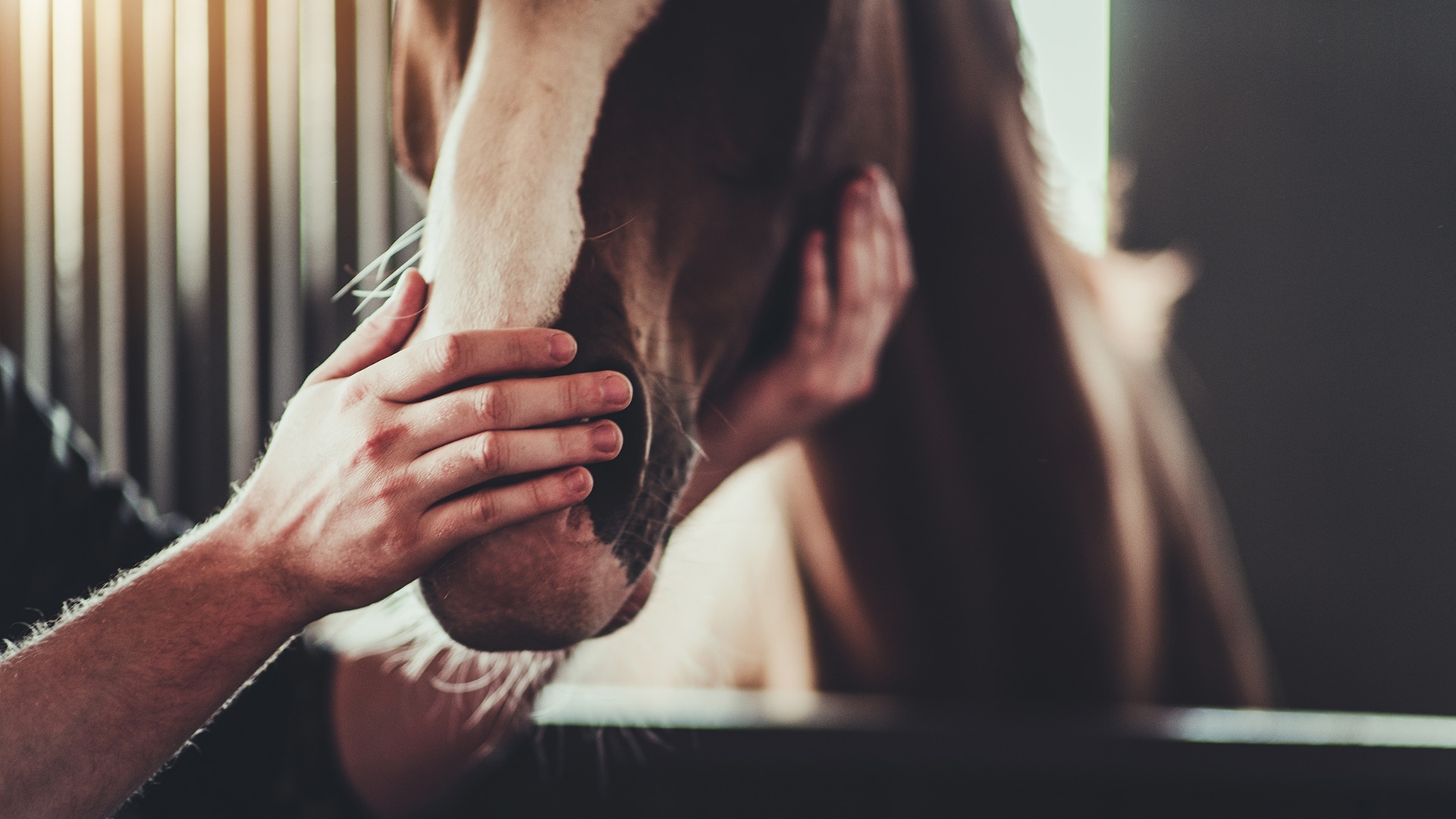I’m an amateur rider, a volunteer, an ENSW Board member. I pencil, pick up jump poles, support fundraisers and sit through long committee meetings. I ride dressage and eventing for the love of the sport – not the ribbons. My experiences will be similar to many others in our sport.
I’ve also worked at senior levels in complex organisations and have practical experience in organisational structures and resolving dysfunction.
Like many, I’ve had enough of the talk about reforming the Equestrian Australia system. Our equestrian community is full of passionate, capable people – yet here we are, still stuck in the same debates, the same circular arguments.
But I’m an optimist – if we strip it all away, I believe our issues aren’t very large. They are surmountable and there is far more we agree on than disagree.
We just need to roll up our sleeves and focus on the detailed and disciplined next steps. It’s hard work but we can get there.
It’s time to get change happening – it’s within our grasp.
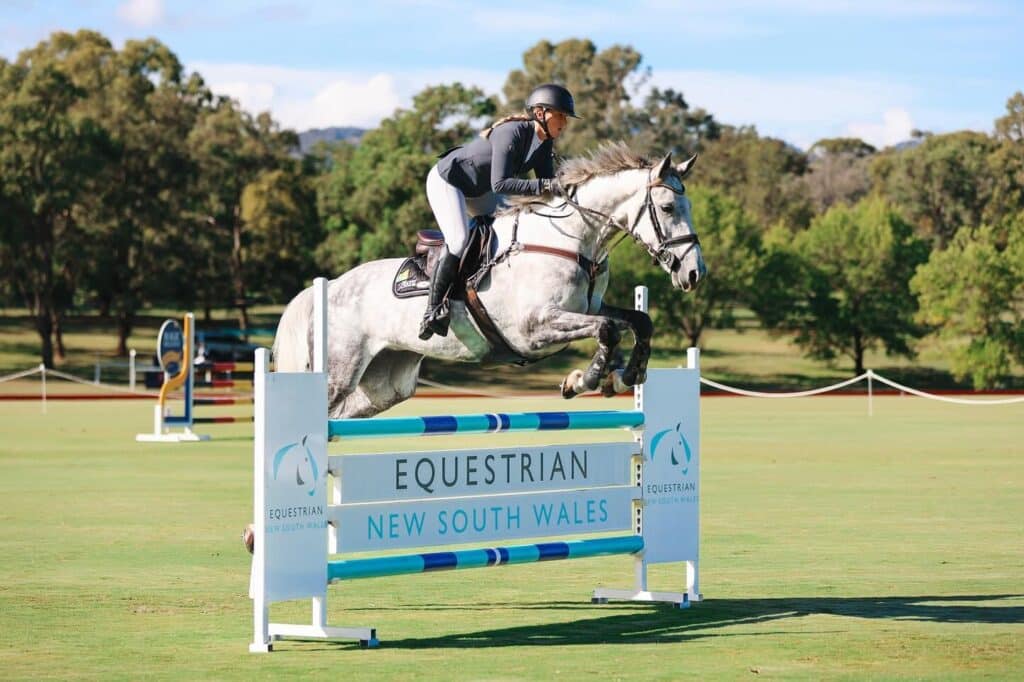
A competitor in action at the 2024 Scone Horse Trials, held at Ellerston in NSW. Image supplied.
LOOK BACK TO GO FORWARDS
In 2022–23, I was part of the National Equestrian Structural Working Group (NESSWG) established by the EA Board. We were a cross-section of the EA community; state reps, EA executive, Australian Sports Commission observers, and an independent chair, all working to map a better future.
The report we delivered in March 2023 proposed a model focused on members. It recognised three key delivery layers: National, Discipline, and Local Delivery. We called it the “Member-Centric” model.
“We’re wasting time
defending positions rather
than solving problems…”
Crucially, it outlined the next steps needed to move forward; specifically, a detailed financial model covering both state and national level (the EA system), and the need for clearly mapped roles and responsibilities.
The incoming EA Board at that time rejected the NESSWG model and instead proposed an alternative ‘Discipline’ model. They released a White Paper, which included detailed thinking and alternative ideas.
But here we are in 2025, and none of the next steps from either proposal have been delivered. Why? Because we’ve been stuck in endless debates about structures and labels, we haven’t done the detailed, unglamorous, but necessary work on structural change that gets results.
LET’S END THE ‘MODEL’ DISCUSSIONS
I get so tired of conversations about “unitary” vs “federated” vs “discipline” models. Often just points of view not grounded in facts – or personal preferences dressed up as strategy.
We’re wasting time defending positions rather than solving problems.
Let’s drop the old language. Instead of ‘EA’, ‘Disciplines’ and ‘States’, let’s talk about what we really need: a national executive that provides leadership, planning and shared services; empowered sport level leadership that drives each discipline forward; and local delivery that connects members on the ground.
That’s it. That’s the system. It’s the detail of the responsibilities and allocated resources for each of the three leadership groups that really matters.
ONE SOURCE OF TRUTH
When it comes to finances, we need to be honest with ourselves: a robust financial model of the entire EA system does not exist – not yet. Having served on the NESSWG, sat on a state Board, and worked professionally in strategy and M&A, I can say this with confidence.
There’s a lot of talk about duplication, untapped efficiencies, or pools of unused funds – most is exaggerated. But it is all based on assumptions, not hard data.
As members, we should expect better. We need one transparent, system-wide financial model – a single source of truth that includes national and state income, expenses, assets, and reserves.
Without it, no structure can be properly planned, and no decisions can be responsibly made.

Working Equitation is a discipline quickly growing in popularity.
DESIGN FOR THE FUTURE, NOT THE PAST
As part of the NESSWG I focused my attention on member participation and considered where future growth would come from. A couple of key facts have stuck in my mind:
- 68% of our members participate in two or more disciplines. A siloed system simply doesn’t work for them. They want to be able to move seamlessly between the sports they love (NESSWG presentation 2022/23)
- Our EA system members represent less than 30% of organised equestrian sport participants in Australia (and that excludes other recognised horse sports such as polocrosse, racing, campdrafting etc). If we want to grow, we must look outward, not just inward (ASC AustPlay data 2024)
Participation growth will not only come from focusing on our existing disciplines. It will also come from nurturing emerging equestrian sports and innovating in the gaps between disciplines (consider the rise of Working Equitation). Any new structure must look to the future and cannot be fixed on a preconceived view of disciplines as we know them today.
WHAT WE AGREE ON
We are far more aligned than we think – most people I speak to want the same things:
Strategic, empowered leadership for each discipline; to grow the sport, build athlete pathways, drive excellence and keep our riders and horses safe.
Efficient national services, to manage federal and international stakeholders, digitise systems, reduce waste and drive effective ‘one sport’ planning processes.
Strong, local delivery that supports our volunteers to do what they do best – run events, support clubs and infrastructure, and build community.
WHERE TO FOCUS
We need to stop obsessing over constitution changes and start focusing on the work that actually matters. The structure we need is already visible – we just need clarity of roles, joint planning, and shared resourcing to bring it to life.
With the right MOUs or working agreements in place, it’s not about “EA vs the States” or “Disciplines vs National”. It’s about collaboration. In my view, we should focus on:
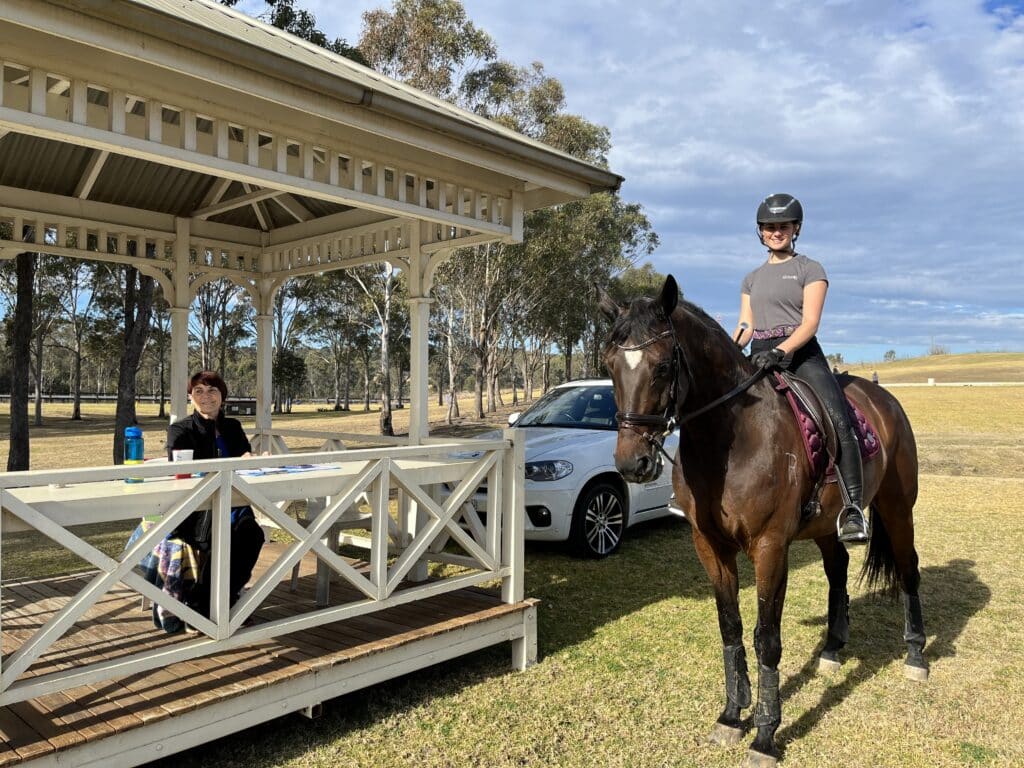
Our sport is powered by an army of volunteers.
1. Building strong, empowered discipline leadership — within a shared system
The leadership of our disciplines should not rely entirely on volunteers. We need investment in all disciplines, both FEI and our emerging sports.
We need paid, strategic Heads of Discipline who lead their sport forward. They should have the authority and resources to create a national plan, grow participation, improve safety and horse welfare, build pathways from grassroots to elite, motivate and support our expert volunteers and officials.
2. A focused and efficient national executive – doing national things well
The national team should focus where it adds real value:
- Managing relationships with ASC, FEI, IOC and other federal bodies.
- Delivering shared systems and services – digital tools, insurance, membership platforms, compliance.
- Running annual strategic planning and budgeting – linking National, Sport and Local into a single “One Sport” operating plan.
- Providing education services – for officials, coaches and members, including rules, regulations and welfare.
- Supporting communication and alignment across the system.
This is not about empire-building. It’s about doing what only a national office can do – and doing it efficiently, professionally, and in service of the whole.
Without coordination, strategy, and shared tools – the system wastes time, energy, and trust.
3. Protect and strengthen local delivery
Our sport is powered by an army of volunteers – running events, serving on committees. This is a huge asset, not a cost-saving opportunity to be “centralised”. A national restructure won’t magically reduce costs, because the majority of local delivery isn’t overhead – it’s volunteer hours, the core of our sport.
We need to retain a supporting structure, a Local Delivery team in each state to:
- Coordinate clubs, committees and volunteers.
- Support cross-discipline groups such as interschool and amateur rider groups.
- Manage calendars and shared infrastructure, promote cross-discipline collaboration.
- Manage local government relations and grants.
- Support the human side of sport – committee guidance, conflict resolution, thank-you’s and volunteer retention.
Without strong local connection, the sport fragments. Local delivery is what keeps people turning up.
4. Align vertically and horizontally — the power of joined-up thinking
This system only works if both vertical and horizontal perspectives are built into planning and decision-making. Each group, the national executive, discipline (sport) leadership and local delivery, must know what they’re accountable for. But they must also feed into one another.
An annual operational planning process needs to be established and owned by the national executive, with input from discipline sport leadership and local delivery leads. That’s how we ensure that our key financial resources such as members fees, grant funding, and people’s time are allocated where they’ll have the greatest impact.
This three-part approach – sport-led, nationally-supported, locally-delivered – is not theory. It’s practical, achievable, and already working in parts of our system. The challenge is to make it consistent, integrated, and focused on our members, not internal battles.
Kicking it off doesn’t require a complete constitutional revolution. It just requires role clarity, timely annual planning processes, and the discipline to stick to it. Once we prove it works, constitution change can follow.

Local delivery is what keeps people turning up to events in each state.
CONSTRUCTIVE TENSION ISN’T A FLAW, IT’S A FEATURE
Some may argue that three delivery levels is too complex. I disagree. The best organisations I’ve worked in use this ‘vertical and horizontal’ approach and deliberately build constructive tension – to ensure checks and balances, avoid groupthink, bloated structures and brings multiple perspectives to the table. “Tension makes diamonds”, one of my mentors used to say. I believe that.
By contrast, in my view any unitary model is doomed to fail – it doesn’t really matter which type you choose. Why? Because human nature creeps in. Silos form. Duplication and inefficiency follows.
In our example of a ‘Discipline’ unitary model, our members – especially the 68% who participate across multiple equestrian sports, will get lost in the gaps as discipline structures move apart over time. It requires a counterbalancing force at a national executive and local level constantly on the lookout for cross-discipline synergies.
The German Equestrian Federation have recognised this. They just recently walked away from their discipline-centralised model due to siloed structures and the need for a more integrated and efficient equestrian organisation.
THE NEXT STEPS — LET’S GET ON WITH IT
We don’t need more debate; we’ve spent years talking. Smart people have already done the groundwork. We need action – practical, inclusive, and grounded in reality. Here’s how we move forward:
1. Agree on Common Principles
Start with what we already share. Pull together the overlapping ideas from the NESSWG report and the EA White Paper – values like stronger discipline leadership, better service delivery, and member focus. Publish these principles as a joint commitment to guide the next phase.
2. Re-establish a Joint Working Group
Build a small, skilled team. Not people representing entrenched positions but those, ideally from equestrian backgrounds, with deep experience in planning, finance, M&A, HR, governance or stakeholder engagement. Include diverse perspectives, but ensure everyone is there to work together, not argue for “their” side.
3. Complete the current ‘Financial Fact Base’
Let’s finally get this done. Undertake a full, transparent mapping of the current system: roles, responsibilities, people, processes – and most critically, finances. This forms the fact base for all decisions to follow.
Open-book must mean open-book; all legal entities – State Branches, State Disciplines and EA National must participate with full transparency. If needed, a secure data room can be established using standard M&A processes.
4. Design from the ground up
Define the jobs that need doing – from event delivery to safety standards to FEI relations. Then decide where each task is best handled; is it by the national executive, sport (discipline) leadership, or local delivery?
Many jobs may stay where they are, but the real insight comes from examining the “grey zones”, tasks currently duplicated or tasks slipping between the cracks and left undone.
Often, the issue isn’t structural but weak process, poor communication or unclear accountability.
Next, estimate the real cost $ of each task – using today’s tech and tomorrow’s needs. Determine what can be delivered by volunteers and what requires salaried support.
Importantly the working group needs to be careful it doesn’t get ahead of itself and design structure. Let the structure emerge from job function – not the other way around.
5. Realigning finances without losing trust
As we modernise, finances must follow. Use MOUs that reflect ground-up costings and role allocations.
Annual joint planning ensures every dollar is deployed with intent. This isn’t about centralising funds – it’s about making them work smarter.
There’s no need to fear losing legacy funds. Sensible principles in both the NESSWG report and EA White Paper affirmed that existing member-owned reserves will remain protected and used only for the benefit of those members.
6. Build simple, accountable structures
Only once roles across the EA system are clear should structural change follow. If constitutional change is needed, do it later – after the new ways of working are proven.
Constitutional change is complex and messy. Save it for last. Keep structures as simple as possible. Ensure checks and balances, or ‘constructive tension’, is built in from day one.
Above all, any new structure must support our greatest asset: our dedicated volunteers.
Equestrian sport is unique. It depends on a vast, skilled volunteer workforce to uphold safety, care for our equine athletes and maintain complex infrastructure across Australia.
Any new structure must connect and nurture the volunteers at a local level who keep our sport alive.
LET’S RIDE
Let’s stop debating the labels. Let’s stop defending old models. Let’s build something that works – based on facts, transparency, and putting members first.
This work isn’t glamorous. It’s detailed, practical, and sometimes slow. But it’s the only way to create lasting, member-focused reform.
We are so close. Let’s roll up our sleeves. Let’s not waste this opportunity.
